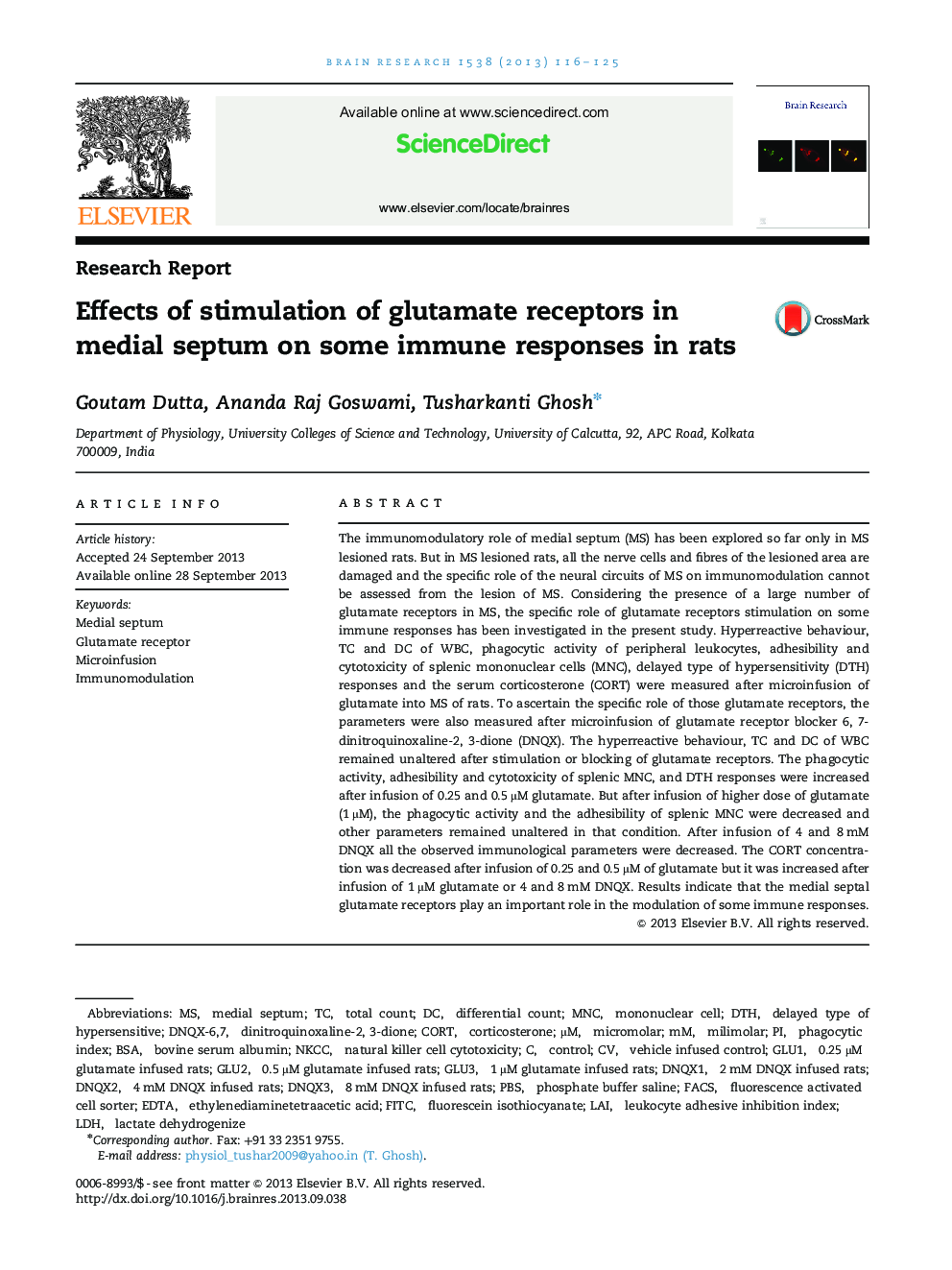| Article ID | Journal | Published Year | Pages | File Type |
|---|---|---|---|---|
| 6263687 | Brain Research | 2013 | 10 Pages |
â¢Microinfusion of 0.25 and 0.50 μM glutamate into MS produces immune changes.â¢The effects of 1.0 μM glutamate are not similar to that of lower doses.â¢Microinfusion of DNQX (glutamate receptor blocker) also produces immune changes.â¢Corticosterone is the important influencing factor behind the immunomodulation.
The immunomodulatory role of medial septum (MS) has been explored so far only in MS lesioned rats. But in MS lesioned rats, all the nerve cells and fibres of the lesioned area are damaged and the specific role of the neural circuits of MS on immunomodulation cannot be assessed from the lesion of MS. Considering the presence of a large number of glutamate receptors in MS, the specific role of glutamate receptors stimulation on some immune responses has been investigated in the present study. Hyperreactive behaviour, TC and DC of WBC, phagocytic activity of peripheral leukocytes, adhesibility and cytotoxicity of splenic mononuclear cells (MNC), delayed type of hypersensitivity (DTH) responses and the serum corticosterone (CORT) were measured after microinfusion of glutamate into MS of rats. To ascertain the specific role of those glutamate receptors, the parameters were also measured after microinfusion of glutamate receptor blocker 6, 7-dinitroquinoxaline-2, 3-dione (DNQX). The hyperreactive behaviour, TC and DC of WBC remained unaltered after stimulation or blocking of glutamate receptors. The phagocytic activity, adhesibility and cytotoxicity of splenic MNC, and DTH responses were increased after infusion of 0.25 and 0.5 µM glutamate. But after infusion of higher dose of glutamate (1 µM), the phagocytic activity and the adhesibility of splenic MNC were decreased and other parameters remained unaltered in that condition. After infusion of 4 and 8 mM DNQX all the observed immunological parameters were decreased. The CORT concentration was decreased after infusion of 0.25 and 0.5 µM of glutamate but it was increased after infusion of 1 µM glutamate or 4 and 8 mM DNQX. Results indicate that the medial septal glutamate receptors play an important role in the modulation of some immune responses.
